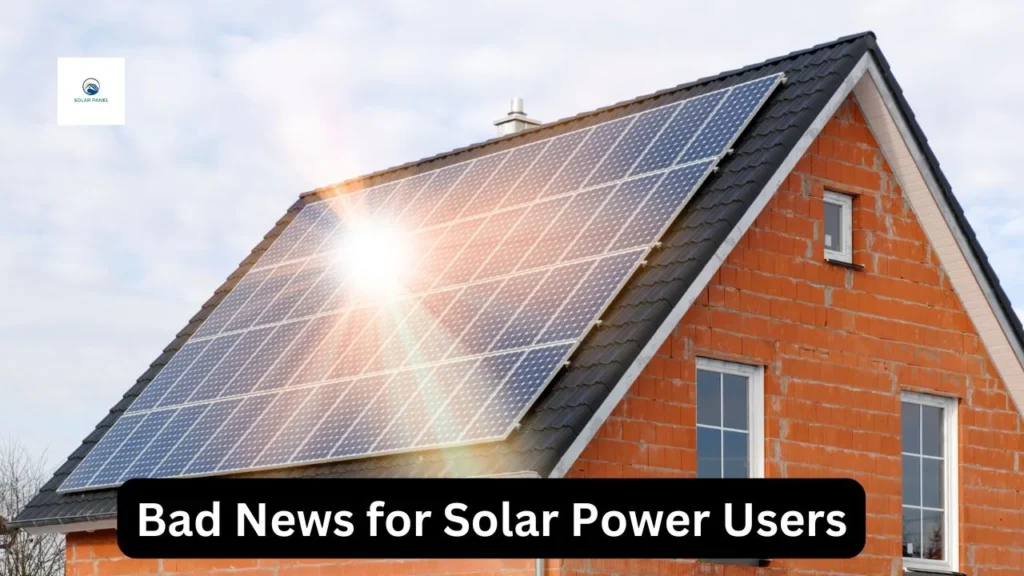South Africa’s solar power users may soon encounter additional charges on their rooftop solar systems. This development is part of a broader strategy by municipalities and Eskom to recover revenue losses from households that generate their electricity. These proposed changes could significantly impact how solar users interact with the grid and pay for electricity.

Why Are New Charges Being Introduced?
The growing adoption of rooftop solar systems in South Africa has caused concerns about revenue loss for municipalities and utility providers like Eskom. Households generating their electricity reduce reliance on municipal-supplied electricity, impacting revenue streams.
Government’s Response to Revenue Loss
Minister of Cooperative Governance and Traditional Affairs Velenkosini Hlabisa addressed this issue during a parliamentary session. He revealed plans to introduce surcharges on small-scale embedded generation (SSEG) systems, which include rooftop solar installations. These surcharges aim to stabilize municipal revenue generation and support sustainable energy policies.
Municipal and National Plans to Address the Issue
Short-Term Interventions
The Department of Cooperative Governance and Traditional Affairs (CoGTA) is exploring alternative revenue streams and revising tariffs. These measures aim to:
- Ensure competitive pricing.
- Improve revenue collection.
- Reduce municipal debt.
Support for Municipal Policies
Municipalities, with support from the National Energy Regulator of South Africa (Nersa), are working to design suitable tariffs for SSEG users. These tariffs will also apply to Independent Power Producers (IPPs) using municipal networks to wheel power.
Eskom’s Proposed Structural Changes
Eskom, South Africa’s primary energy supplier, has announced its plan to introduce structural changes to its tariff system.
The ‘Eskom Battery’ Controversy
Eskom refers to grid-connected solar users as relying on the “Eskom Battery” for backup power during cloudy days, nights, and peak hours. This dependency prompts the utility to propose additional charges for grid access.
New Fee Structure
The proposed changes include:
- Single Energy Charge
- Ancillary Network Charge
- Network Demand Charge
- Service and Administration Charge
These charges will apply regardless of usage, increasing fixed fees for many users. For instance, fixed fees could rise from R196 to R554, representing a 183% increase.
Impact on Consumers
- Low Consumption Households: Likely to pay more for electricity.
- High Consumption Households: Expected to see reduced costs, benefiting from lower tariffs for heavy usage.
- Solar Users: May find it harder to break even due to monthly transmission network charges linked to inverter capacity.
Potential Benefits for Solar Users
Despite these challenges, Eskom plans to allow solar users to sell excess electricity back to the grid. While this could offset some monthly costs, the structure of these arrangements remains financially burdensome for many users.
Conclusion:
The proposed surcharges and tariff changes could discourage solar adoption in South Africa, making it less cost-effective for households. While municipalities and Eskom seek to secure revenue streams, these measures may undermine efforts to promote renewable energy adoption. Stakeholders must strike a balance between maintaining financial sustainability and fostering a transition to green energy.
FAQs
1. What is the proposed surcharge for solar power users?
The surcharge is a fee municipality and Eskom plan to impose on households with rooftop solar systems to recover lost revenue and maintain grid stability.
2. How will the new tariffs affect low-energy users?
Low-energy users, including those with rooftop solar systems, will likely face higher fixed costs, even if their grid electricity usage is minimal.
3. Can solar users sell excess electricity back to the grid?
Yes, Eskom plans to allow feed-in arrangements for solar users, but current structures make it challenging to offset the associated network charges fully.
4. Will high-energy consumers benefit from the proposed changes?
Yes, high-energy consumers may see reduced costs, as the new tariff structure favors heavy electricity users.
5. What is the government’s long-term plan for SSEG policies?
The government aims to develop comprehensive SSEG policies that balance municipal revenue generation with the promotion of sustainable energy practices.
